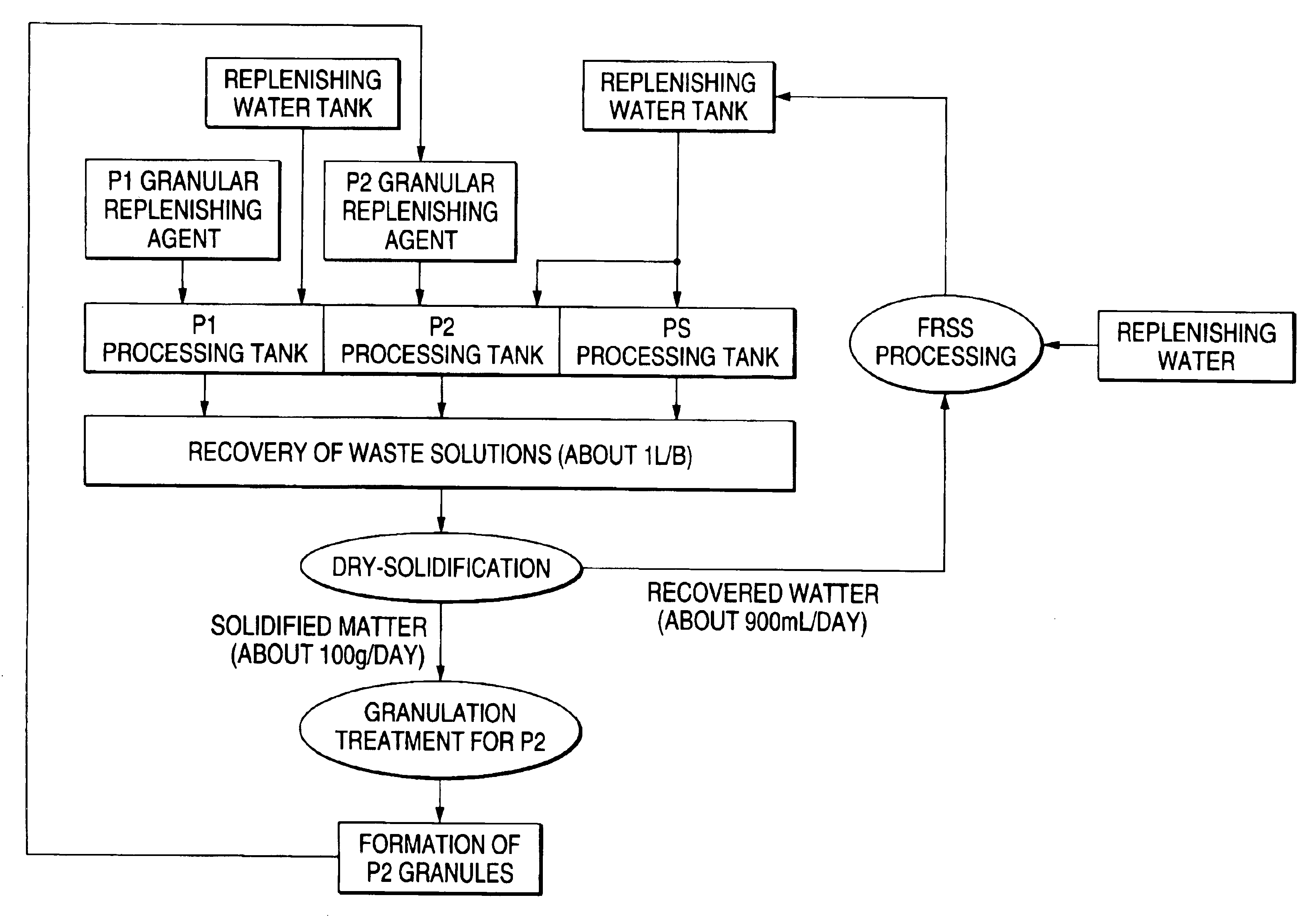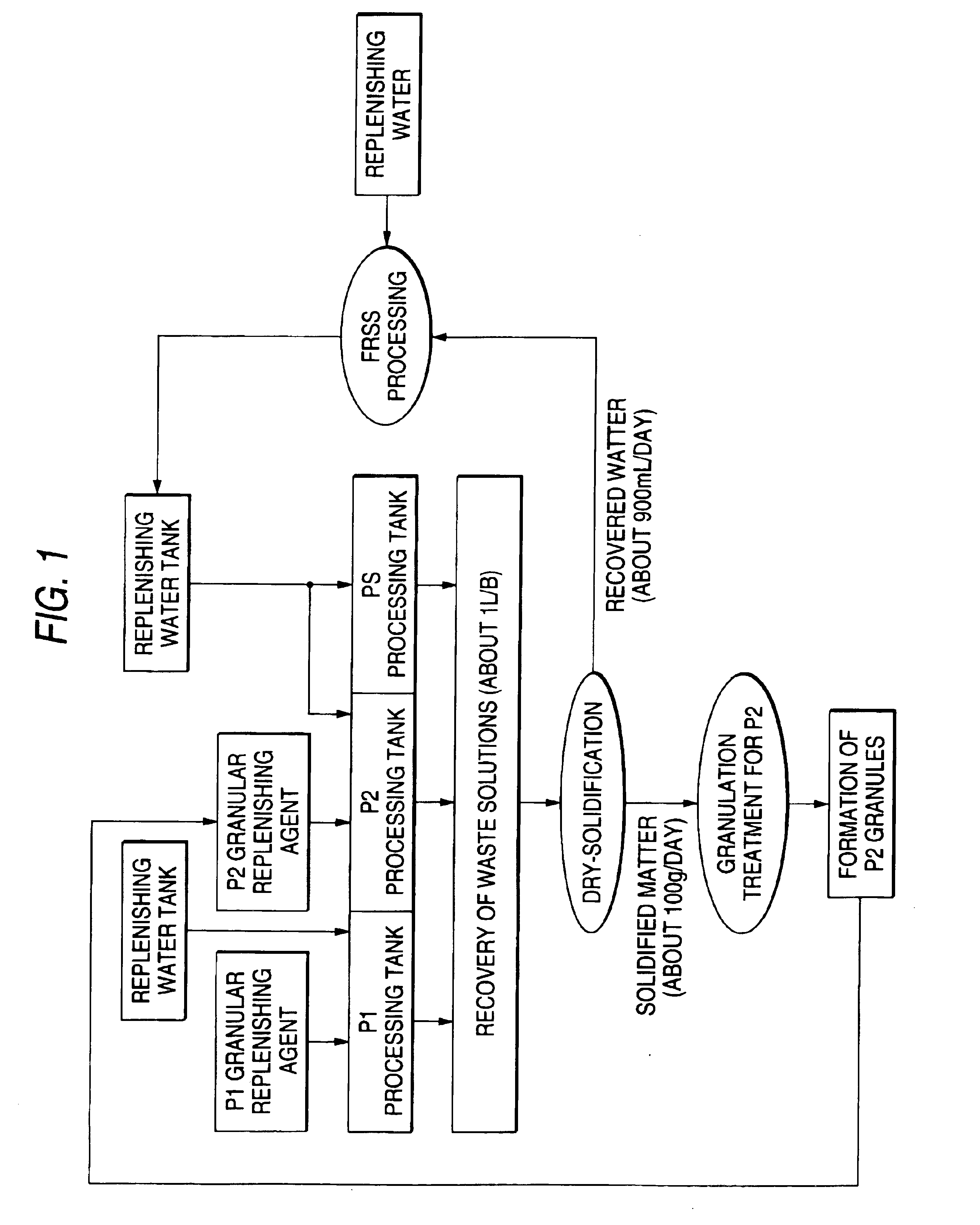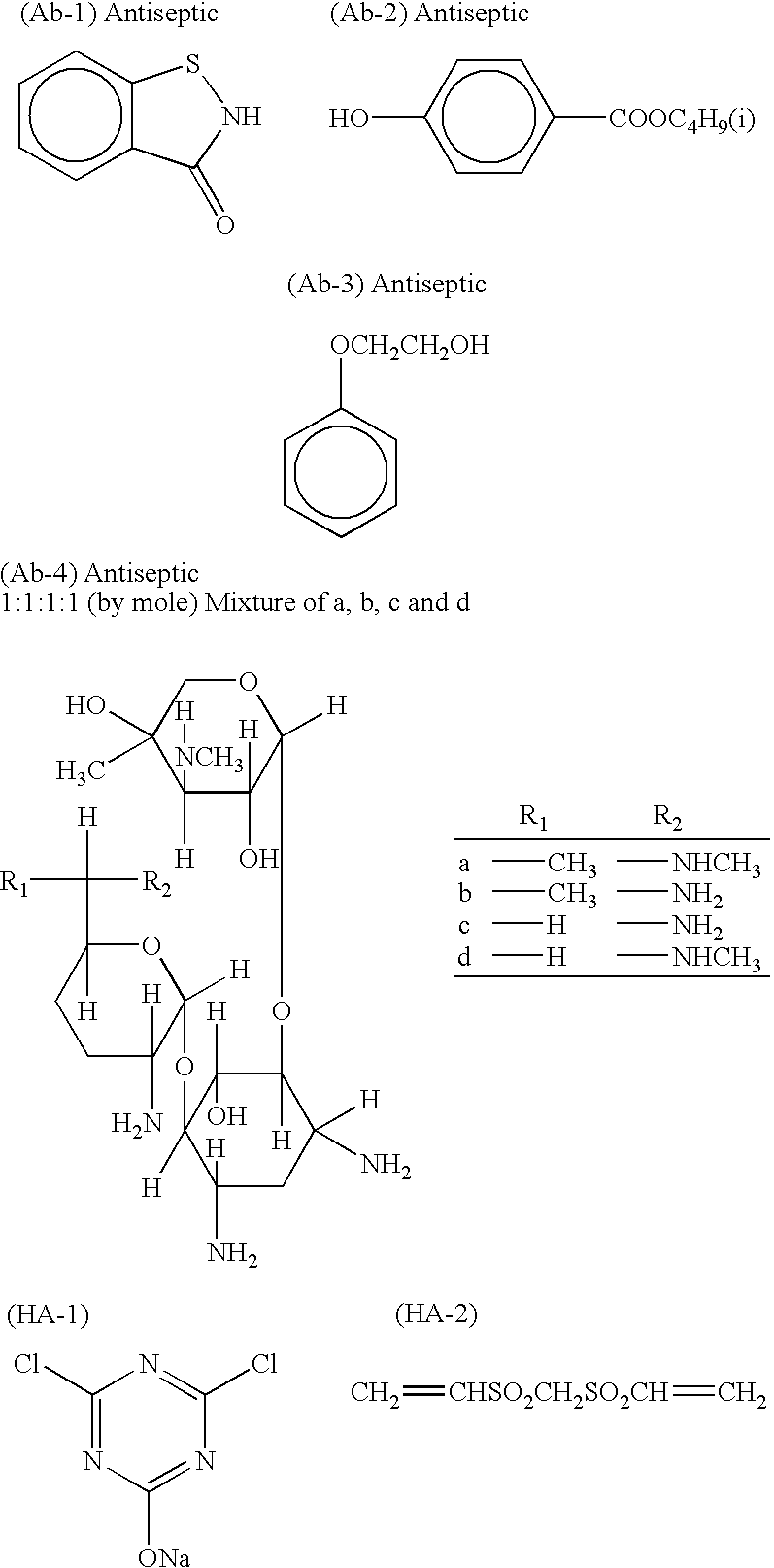Method of reusing photographic processing waste solution, and photographic processing agent
a technology of waste solution and photographic processing, which is applied in the direction of multicolor photographic processing, separation processes, instruments, etc., can solve the problems of waste solution deterioration, difficult to say that the use of such apparatus is environmentally favorable, and general difficulty in regenerating use. achieve the effect of reducing transportation load
- Summary
- Abstract
- Description
- Claims
- Application Information
AI Technical Summary
Benefits of technology
Problems solved by technology
Method used
Image
Examples
example 1
[0195]Color paper described below was prepared, and photographic processing thereof was carried out using a processing agent regenerated in accordance with the invention. By this photographic processing, the present method and processing agent were evaluated.
(1) Preparation of Color Paper:
[0196]A silver halide color photographic material (Sample No. 101) having a layer structure described below was prepared by subjecting a paper support coated with polyethylene resin on both sides to corona discharge treatment, then providing on the support surface a gelatin undercoat layer containing sodium dodecylbenzenesulfonate, and further coating the undercoat layer sequentially with first to seventh photographic constituent layers.
[0197]As gelatin hardeners in each constituent layer, sodium 1-oxy-3,5-dichloro-s-triazine (H-1) and Hardener (H-2) were used. In addition, (Ab-1), (Ab-2), (Ab-3) and (Ab-4) were added to each layer so that their total coverage values were 15.0 mg / m2, 60.0 mg / m2, 5....
example 2
[0242]The same experiment as the present experiment 3 of Example 1 was carried out, except that the water evaporated during the solidification of the waste solution was recovered and reused for replenishing the bleach-fix bath and the rinsing bath, and therein the same processing performances as in the present experiment 3 of Example 1 were achieved. This result indicates that the effluent quantity can be further reduced.
[0243]In accordance with the present method of reusing a photographic processing waste solution in which the waste solution is dry-solidified in its total amount without removal of any accumulated ingredients including silver and then granulated, apparatus for developing and regenerating waste solutions can be downsized and reduced in cost with ease, and excellent effect of substantially avoiding discharge of photographic processing effluents can be achieved. Further, the processing chemicals regenerated by the invention (solid processing chemicals) can produce exce...
PUM
| Property | Measurement | Unit |
|---|---|---|
| temperature | aaaaa | aaaaa |
| temperatures | aaaaa | aaaaa |
| temperature | aaaaa | aaaaa |
Abstract
Description
Claims
Application Information
 Login to View More
Login to View More - R&D
- Intellectual Property
- Life Sciences
- Materials
- Tech Scout
- Unparalleled Data Quality
- Higher Quality Content
- 60% Fewer Hallucinations
Browse by: Latest US Patents, China's latest patents, Technical Efficacy Thesaurus, Application Domain, Technology Topic, Popular Technical Reports.
© 2025 PatSnap. All rights reserved.Legal|Privacy policy|Modern Slavery Act Transparency Statement|Sitemap|About US| Contact US: help@patsnap.com



